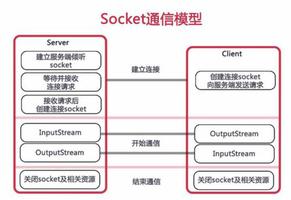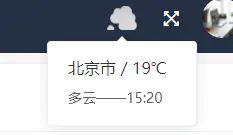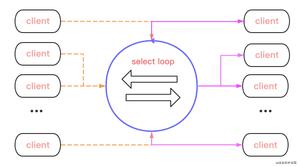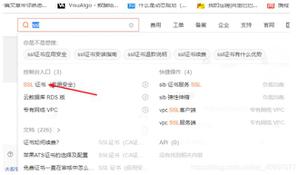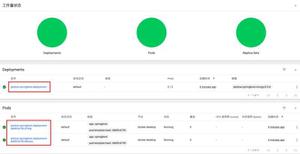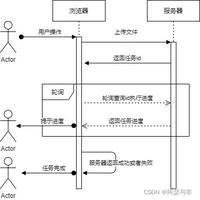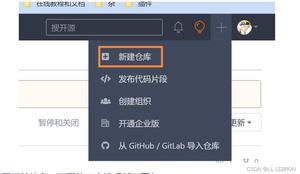Spring中的Websocket身份验证和授权
我一直在努力用Spring-Security 正确实现Stomp(websocket) 和 。
为了后代,我将回答我自己的问题以提供指导。
问题
Spring WebSocket文档(用于身份验证)看起来不清楚ATM(IMHO)。而且我不明白如何正确处理 和 。
我想要的是
- 使用登录名/密码对用户进行身份验证。
- 防止匿名用户通过WebSocket连接。
- 添加授权层(用户,管理员等)。
- 有
Principal在控制器可用。
我不想要的
- 在HTTP协商端点上进行身份验证(因为大多数JavaScript库都不随HTTP协商调用一起发送身份验证标头)。
回答:
如上所述,文档(ATM)尚不清楚(IMHO),直到Spring提供一些清晰的文档为止,这是一个样板,可避免您花两天的时间试图了解安全链的功能。
Rob-Leggett做出了非常不错的尝试,但他在Springs上课了,所以我感到不舒服。
要知道的事情:
- __http和WebSocket的 安全链 和 安全配置 是完全独立的。
- Spring
AuthenticationProvider完全不参与Websocket身份验证。 - 不会在HTTP协商终结点上进行身份验证,因为没有JavaScript STOMP(Websocket)将身份验证标头与HTTP请求一起发送。
- 在CONNECT请求上设置后, 用户 (
simpUser)将存储在websocket会话中,以后的消息将不再需要身份验证。
Maven部门
<dependency> <groupId>org.springframework.boot</groupId>
<artifactId>spring-boot-starter-websocket</artifactId>
</dependency>
<dependency>
<groupId>org.springframework</groupId>
<artifactId>spring-messaging</artifactId>
</dependency>
<dependency>
<groupId>org.springframework.boot</groupId>
<artifactId>spring-boot-starter-security</artifactId>
</dependency>
<dependency>
<groupId>org.springframework.security</groupId>
<artifactId>spring-security-messaging</artifactId>
</dependency>
WebSocket配置
下面的配置注册一个简单的消息代理(请注意,它与身份验证或授权无关)。
@Configuration@EnableWebSocketMessageBroker
public class WebSocketConfig extends WebSocketMessageBrokerConfigurer {
@Override
public void configureMessageBroker(final MessageBrokerRegistry config) {
// These are endpoints the client can subscribes to.
config.enableSimpleBroker("/queue/topic");
// Message received with one of those below destinationPrefixes will be automatically router to controllers @MessageMapping
config.setApplicationDestinationPrefixes("/app");
}
@Override
public void registerStompEndpoints(final StompEndpointRegistry registry) {
// Handshake endpoint
registry.addEndpoint("stomp"); // If you want to you can chain setAllowedOrigins("*")
}
}
Spring安全配置
由于Stomp协议依赖于第一个HTTP请求,因此我们需要授权对脚踏握手端点的HTTP调用。
@Configurationpublic class WebSecurityConfig extends WebSecurityConfigurerAdapter {
@Override
protected void configure(final HttpSecurity http) throws Exception {
// This is not for websocket authorization, and this should most likely not be altered.
http
.httpBasic().disable()
.sessionManagement().sessionCreationPolicy(SessionCreationPolicy.STATELESS).and()
.authorizeRequests().antMatchers("/stomp").permitAll()
.anyRequest().denyAll();
}
}
然后,我们将创建一个负责验证用户身份的服务。
@Componentpublic class WebSocketAuthenticatorService {
// This method MUST return a UsernamePasswordAuthenticationToken instance, the spring security chain is testing it with 'instanceof' later on. So don't use a subclass of it or any other class
public UsernamePasswordAuthenticationToken getAuthenticatedOrFail(final String username, final String password) throws AuthenticationException {
if (username == null || username.trim().isEmpty()) {
throw new AuthenticationCredentialsNotFoundException("Username was null or empty.");
}
if (password == null || password.trim().isEmpty()) {
throw new AuthenticationCredentialsNotFoundException("Password was null or empty.");
}
// Add your own logic for retrieving user in fetchUserFromDb()
if (fetchUserFromDb(username, password) == null) {
throw new BadCredentialsException("Bad credentials for user " + username);
}
// null credentials, we do not pass the password along
return new UsernamePasswordAuthenticationToken(
username,
null,
Collections.singleton((GrantedAuthority) () -> "USER") // MUST provide at least one role
);
}
}
注意:UsernamePasswordAuthenticationToken
具有GrantedAuthorities,如果您使用其他构造函数,Spring会自动设置isAuthenticated = false。
几乎在那儿,现在我们需要创建一个拦截器,该拦截器将设置“ simpUser”标头或在CONNECT消息上抛出“
AuthenticationException”。
@Componentpublic class AuthChannelInterceptorAdapter extends ChannelInterceptor {
private static final String USERNAME_HEADER = "login";
private static final String PASSWORD_HEADER = "passcode";
private final WebSocketAuthenticatorService webSocketAuthenticatorService;
@Inject
public AuthChannelInterceptorAdapter(final WebSocketAuthenticatorService webSocketAuthenticatorService) {
this.webSocketAuthenticatorService = webSocketAuthenticatorService;
}
@Override
public Message<?> preSend(final Message<?> message, final MessageChannel channel) throws AuthenticationException {
final StompHeaderAccessor accessor = MessageHeaderAccessor.getAccessor(message, StompHeaderAccessor.class);
if (StompCommand.CONNECT == accessor.getCommand()) {
final String username = accessor.getFirstNativeHeader(USERNAME_HEADER);
final String password = accessor.getFirstNativeHeader(PASSWORD_HEADER);
final UsernamePasswordAuthenticationToken user = webSocketAuthenticatorService.getAuthenticatedOrFail(username, password);
accessor.setUser(user);
}
return message;
}
}
注意:preSend() 返回a
UsernamePasswordAuthenticationToken,Spring安全链中的另一个元素对此进行测试。请注意:如果您的UsernamePasswordAuthenticationToken构建未通过GrantedAuthority,则身份验证将失败,因为未经授权的构造函数会自动设置“
authenticated = false 。
最后,再创建两个类以分别处理授权和身份验证。
@Configuration@Order(Ordered.HIGHEST_PRECEDENCE + 99)
public class WebSocketAuthenticationSecurityConfig extends WebSocketMessageBrokerConfigurer {
@Inject
private AuthChannelInterceptorAdapter authChannelInterceptorAdapter;
@Override
public void registerStompEndpoints(final StompEndpointRegistry registry) {
// Endpoints are already registered on WebSocketConfig, no need to add more.
}
@Override
public void configureClientInboundChannel(final ChannelRegistration registration) {
registration.setInterceptors(authChannelInterceptorAdapter);
}
}
请注意:@Orderis 别忘了它,它使我们的拦截器可以在安全链中首先注册。
@Configurationpublic class WebSocketAuthorizationSecurityConfig extends AbstractSecurityWebSocketMessageBrokerConfigurer {
@Override
protected void configureInbound(final MessageSecurityMetadataSourceRegistry messages) {
// You can customize your authorization mapping here.
messages.anyMessage().authenticated();
}
// TODO: For test purpose (and simplicity) i disabled CSRF, but you should re-enable this and provide a CRSF endpoint.
@Override
protected boolean sameOriginDisabled() {
return true;
}
}
以上是 Spring中的Websocket身份验证和授权 的全部内容, 来源链接: utcz.com/qa/400413.html

